人教版 (新课程标准)必修五 Unit 5 First aid复习课件(共63张PPT)
文档属性
| 名称 | 人教版 (新课程标准)必修五 Unit 5 First aid复习课件(共63张PPT) | 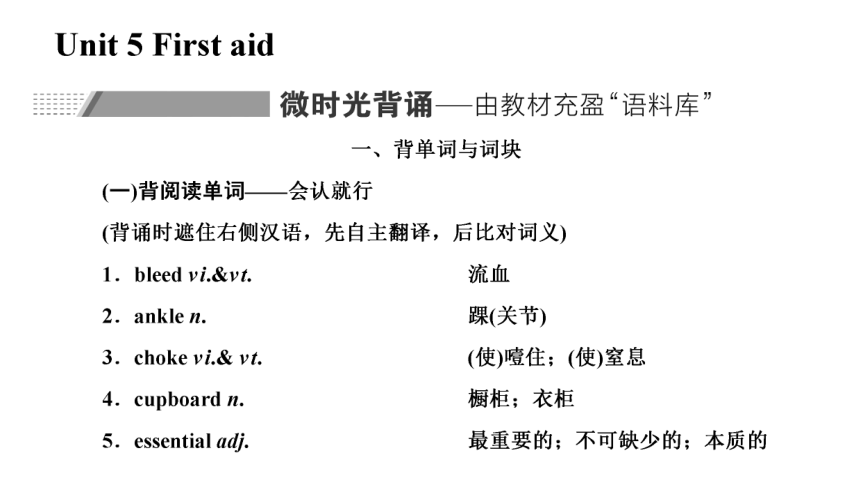 | |
| 格式 | zip | ||
| 文件大小 | 2.6MB | ||
| 资源类型 | 教案 | ||
| 版本资源 | 人教版(新课程标准) | ||
| 科目 | 英语 | ||
| 更新时间 | 2023-03-31 20:50:55 | ||
图片预览

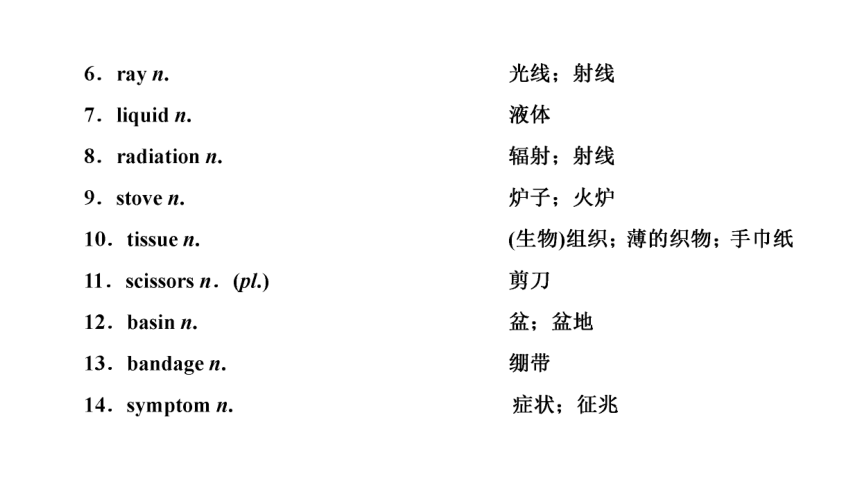
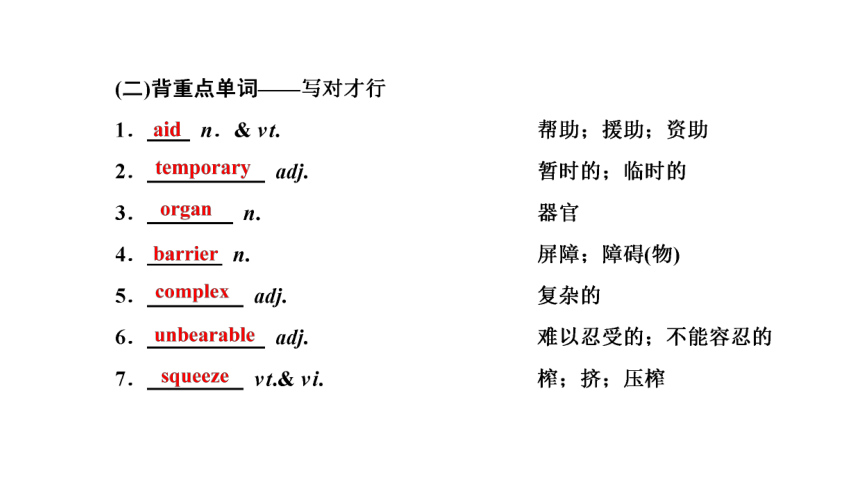
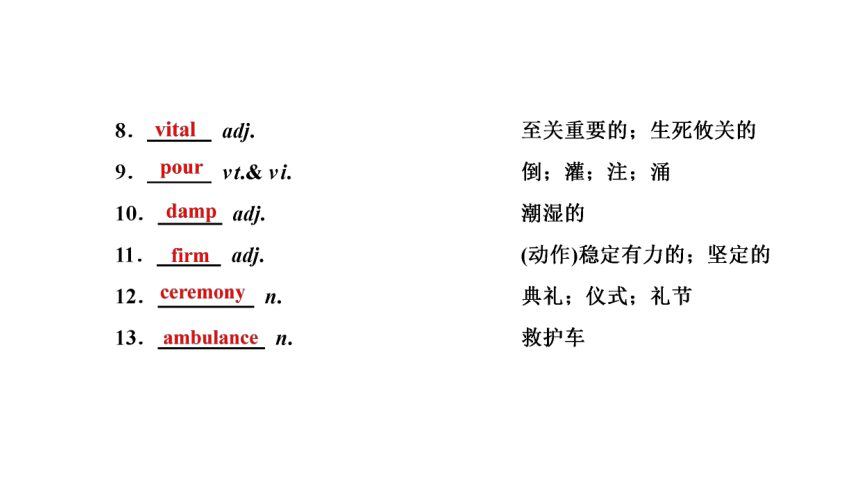
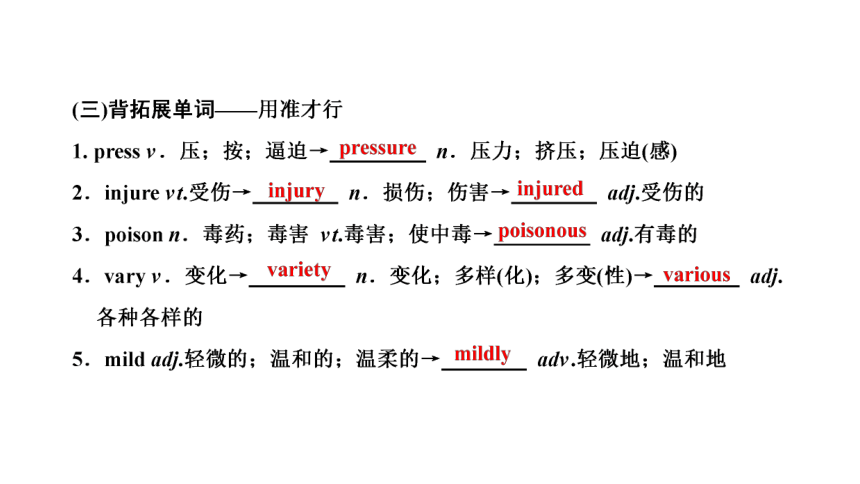
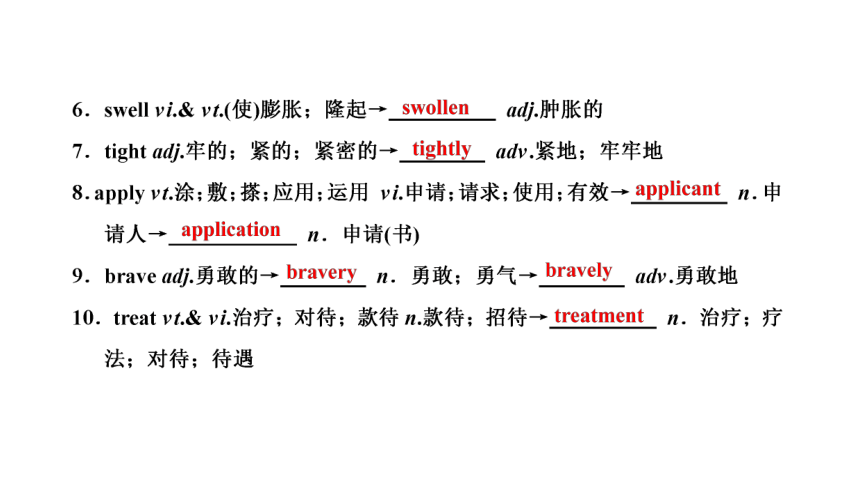
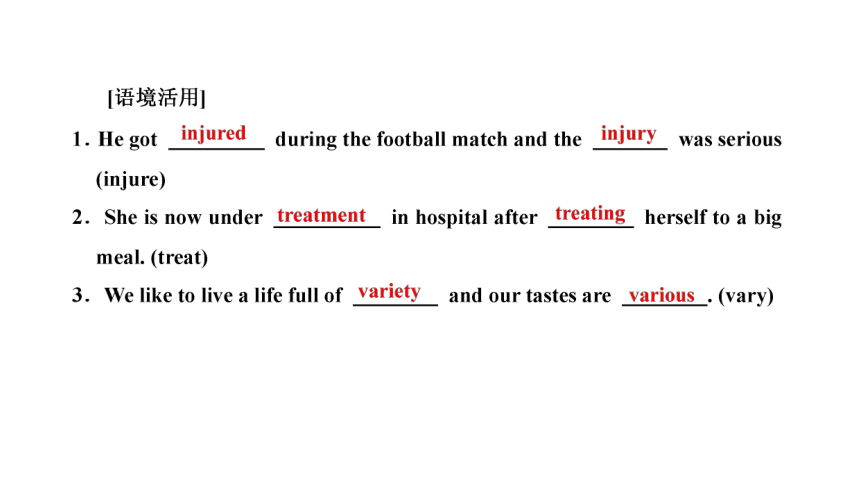
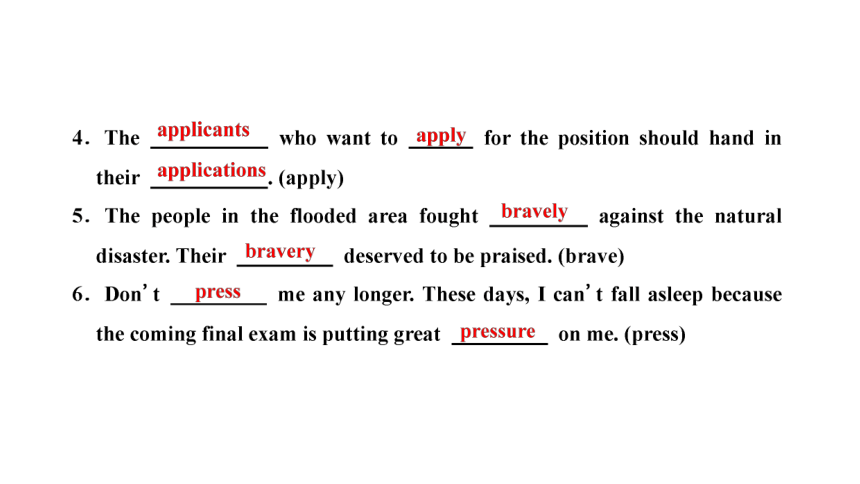
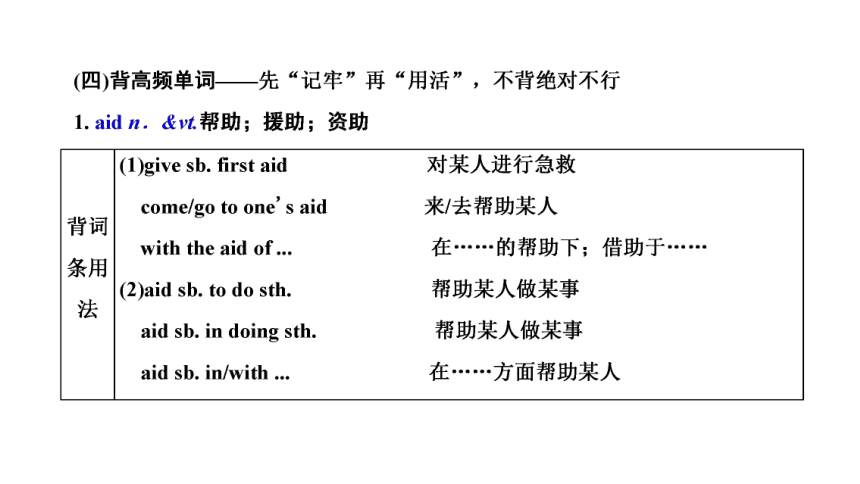
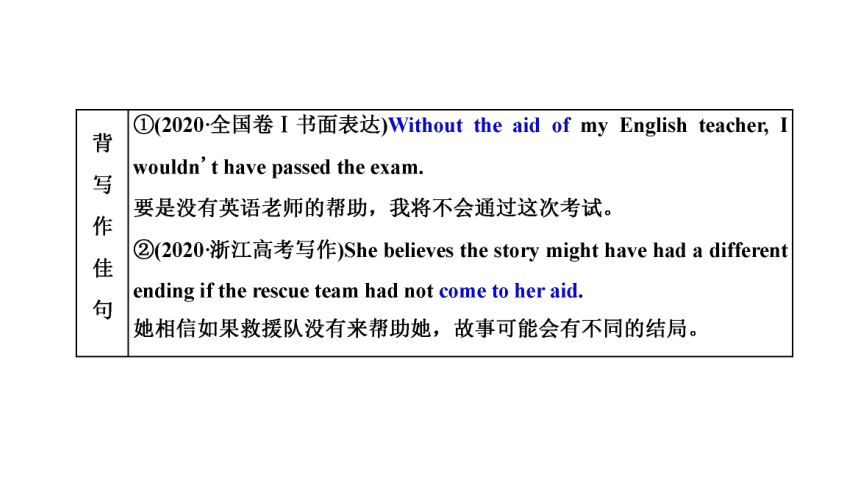
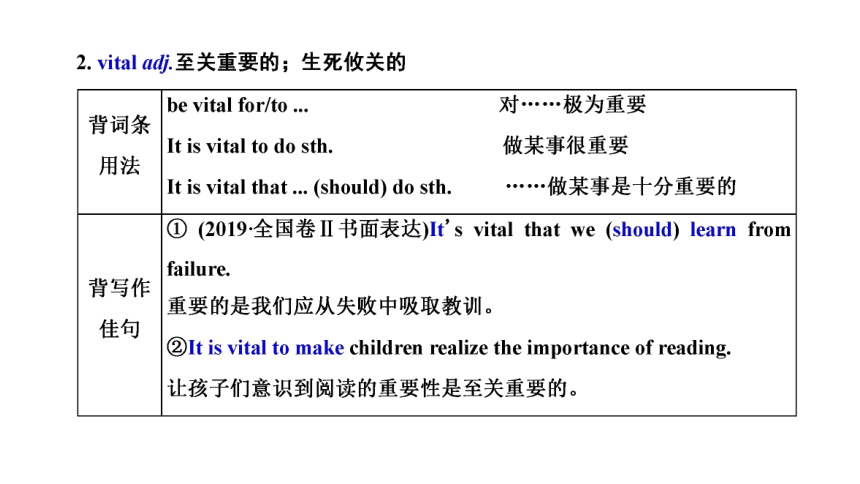
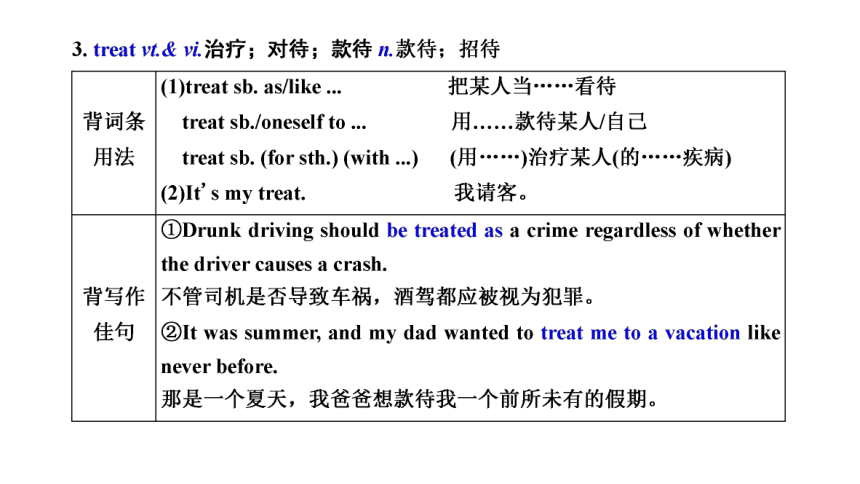
文档简介
(共63张PPT)
涌入
预防
轻微的;不严重的
污染;破坏
(雨)倾盆而下;下大雨
学案(三) 高考语篇的价值发掘——提升学科素养
2017·全国卷Ⅱ·阅读理解D篇——对接课标主题:自然灾害与防范,安全常识与自我保护
When a leafy plant is under attack, it doesn't sit quietly. Back in 1983, two scientists, Jack Schultz and Ian Baldwin, reported that young maple trees getting bitten by insects send out a particular smell that neighboring plants can get. These chemicals come from the injured parts of the plant and seem to be an alarm. What the plants pump through the air is a mixture of chemicals known as volatile organic compounds, VOCs for short.
Scientists have found that all kinds of plants give out VOCs when being attacked. It's a plant's way of crying out. But is anyone listening?Apparently. Because we can watch the neighbors react.
Some plants pump out smelly chemicals to keep insects away. But others do double duty. They pump out perfumes designed to attract different insects who are natural enemies to the attackers. Once they arrive, the tables are turned. The attacker who was lunching now becomes lunch.
In study after study, it appears that these chemical conversations help the neighbors. The damage is usually more serious on the first plant, but the neighbors, relatively speaking, stay safer because they heard the alarm and knew what to do.
Does this mean that plants talk to each other Scientists don't know. Maybe the first plant just made a cry of pain or was sending a message to its own branches, and so, in effect, was talking to itself. Perhaps the neighbors just happened to “overhear” the cry. So information was exchanged, but it wasn't a true, intentional back and forth.
Charles Darwin, over 150 years ago, imagined a world far busier, noisier and more intimate (亲密的) than the world we can see and hear. Our senses are weak. There's a whole lot going on.
?好题不厌百回做,每做一次都有新发现
语篇解读:本文是一篇说明文,介绍了植物在受到昆虫的攻击时是如何进行自我保护的,同时引出世界比我们人类想象的要复杂得多这一观点。
1.What does a plant do when it is under attack
A.It makes noises.
B.It gets help from other plants.
C.It stands quietly.
D.It sends out certain chemicals.
解析:细节理解题。根据第一段的“young maple trees getting bitten ... of the plant”可知,当植物受到攻击时,它会产生一些化学物质。故选D项。
答案:D
2.What does the author mean by “the tables are turned” in paragraph 3
A.The attackers get attacked.
B.The insects gather under the table.
C.The plants get ready to fight back.
D.The perfumes attract natural enemies.
解析:句意理解题。根据第三段最后一句可知,正吃午餐的袭击者变成了午餐,也就是袭击者被攻击了。故选A项。
答案:A
3.Scientists find from their studies that plants can .
A.predict natural disasters
B.protect themselves against insects
C.talk to one another intentionally
D.help their neighbors when necessary
解析:细节理解题。根据第三段中的“Some plants ...do double duty.”可知,植物能保护自己抵抗昆虫。故选B项。
答案:B
4.What can we infer from the last paragraph
A.The world is changing faster than ever.
B.People have stronger senses than before.
C.The world is more complex than it seems.
D.People in Darwin's time were more imaginative.
解析:推理判断题。根据最后一段中的“imagined a world ...see and hear”可推知,世界比它显现出来的更加复杂。故选C项。
答案:C
?文本精读固基础,高考强调基础扎实
(一)由文本积阅读词汇
1.leafy adj. ___________________
2.chemical n. _________
3.pump v. ___________
4.organic adj. _______
(植物)叶茂的,多叶的
化学物质
输送,涌出
有机的
5.attack n.&v. ____________
6.smelly adj. ______________________
7.perfume n. ___________
8.relatively adv. _______
9.branch n. ___________
10.intentional adj. _______________
攻击,袭击
有难闻气味的,有臭味的
香味,芳香
相对地
分支,树枝
故意的,有意的
B
A
C
B
(三)由文本积主题词块
1.under attack ________
2.a mixture of chemicals ___________
3.keep insects away _________
4.relatively speaking _________
5.make a cry of pain ______________
6.in effect _______
7.back and forth ________
8.go on _____
受到攻击
化学混合物
驱赶昆虫
相对而言
发出痛苦的叫声
实际上
反复来回
继续
(四)用文本词汇替换蓝体词汇
1.The campaign is clearly targeted at the young. __________
2.This pattern of development may be referred to as a “professional” development mode. ____________
3.We were hoping to finish it by next week — as it is, it may be the week after.
_________
apparently
be known as
in effect
(五)在语境中悟微点语法
1.In study after study, it appears that these chemical conversations help the neighbors.
分析:句中that引导_____从句,appear是系动词,后面接表语。
[对点练] 完成句子
①______________ the two statements contradict each other.
这两种说法似乎相互矛盾。
②_______________ Tom had a major problem.
看来汤姆遇到了一个大问题。
③______________ the drug does benefit some patients.
看来这种药确实对一些病人有益。
表语
It appears thats
It appeared that
It appears that
2.Charles Darwin, over 150 years ago, imagined a world far busier, noisier and more intimate than the world we can see and hear.
分析:句中than the world we can see and hear是________从句。
[对点练] 完成句子
①The youth of today are better off_________________ .
今天的年轻人比我们过去的境况要好。
②Physical fitness and an outgoing personality are likely to ____________________
computer skills.
健康的身体和外向的性格可能比计算机技能更重要。
比较状语
than we used to be
be more important than
(六)在语境中赏表达之美
1.(赏用词之美)Back in 1983, two scientists, Jack Schultz and Ian Baldwin, reported that young maple trees getting bitten by insects send out a particular smell that neighboring plants can get.
赏析:句子运用getting bitten表达被动,“get+过去分词”可以表示突然发生而未曾料到的情况,此处get更利于强调动作和进行两层含义。两个形容词particular和neighboring(高级词汇)的使用很好地限定了特性和范围,表意具体、清晰。
2.(赏意境之美)Charles Darwin, over 150 years ago, imagined a world far busier, noisier and more intimate (亲密的) than the world we can see and hear.Our senses are weak.There's a whole lot going on.
赏析:句子描绘出了一个鉴于我们的感官的局限性,超出我们视听范围的、正在发生着很多事情的“world”,并使用了“far busier, noisier and more intimate”等进行修饰说明,从而引发读者无限的想象,激发读者对地球与宇宙奥秘进行探索的渴望。
3.(赏修辞之美)①They pump out perfumes designed to attract different insects who are natural enemies to the attackers.Once they arrive, the tables are turned.The attacker who was lunching now becomes lunch.
②Maybe the first plant just made a cry of pain or was sending a message to its own branches, and so, in effect, was talking to itself.Perhaps the neighbors just happened to “overhear” the cry.
赏析:句①the tables are turned运用了比喻的修辞手法,用“桌子翻了(局势发生了逆转)”这一具体、浅显、熟悉的情境把自然界“正在吃午餐的袭击者现在变成了午餐”这么一种情境说明得浅显易懂,给人以鲜明的印象。
句②运用了拟人的修辞手法,用描写人的词来描写物,通过made a cry of pain,talking to itself, overhear赋予物以人的动作、行为、思想、感情、活动。能使读者对所表达事物产生鲜明的印象,产生强烈的感情,引起共鸣,令文章更生动形象。
“课下主题训练”见“课下主题训练(五)”
(单击进入电子文档)
谢 谢 观 看
涌入
预防
轻微的;不严重的
污染;破坏
(雨)倾盆而下;下大雨
学案(三) 高考语篇的价值发掘——提升学科素养
2017·全国卷Ⅱ·阅读理解D篇——对接课标主题:自然灾害与防范,安全常识与自我保护
When a leafy plant is under attack, it doesn't sit quietly. Back in 1983, two scientists, Jack Schultz and Ian Baldwin, reported that young maple trees getting bitten by insects send out a particular smell that neighboring plants can get. These chemicals come from the injured parts of the plant and seem to be an alarm. What the plants pump through the air is a mixture of chemicals known as volatile organic compounds, VOCs for short.
Scientists have found that all kinds of plants give out VOCs when being attacked. It's a plant's way of crying out. But is anyone listening?Apparently. Because we can watch the neighbors react.
Some plants pump out smelly chemicals to keep insects away. But others do double duty. They pump out perfumes designed to attract different insects who are natural enemies to the attackers. Once they arrive, the tables are turned. The attacker who was lunching now becomes lunch.
In study after study, it appears that these chemical conversations help the neighbors. The damage is usually more serious on the first plant, but the neighbors, relatively speaking, stay safer because they heard the alarm and knew what to do.
Does this mean that plants talk to each other Scientists don't know. Maybe the first plant just made a cry of pain or was sending a message to its own branches, and so, in effect, was talking to itself. Perhaps the neighbors just happened to “overhear” the cry. So information was exchanged, but it wasn't a true, intentional back and forth.
Charles Darwin, over 150 years ago, imagined a world far busier, noisier and more intimate (亲密的) than the world we can see and hear. Our senses are weak. There's a whole lot going on.
?好题不厌百回做,每做一次都有新发现
语篇解读:本文是一篇说明文,介绍了植物在受到昆虫的攻击时是如何进行自我保护的,同时引出世界比我们人类想象的要复杂得多这一观点。
1.What does a plant do when it is under attack
A.It makes noises.
B.It gets help from other plants.
C.It stands quietly.
D.It sends out certain chemicals.
解析:细节理解题。根据第一段的“young maple trees getting bitten ... of the plant”可知,当植物受到攻击时,它会产生一些化学物质。故选D项。
答案:D
2.What does the author mean by “the tables are turned” in paragraph 3
A.The attackers get attacked.
B.The insects gather under the table.
C.The plants get ready to fight back.
D.The perfumes attract natural enemies.
解析:句意理解题。根据第三段最后一句可知,正吃午餐的袭击者变成了午餐,也就是袭击者被攻击了。故选A项。
答案:A
3.Scientists find from their studies that plants can .
A.predict natural disasters
B.protect themselves against insects
C.talk to one another intentionally
D.help their neighbors when necessary
解析:细节理解题。根据第三段中的“Some plants ...do double duty.”可知,植物能保护自己抵抗昆虫。故选B项。
答案:B
4.What can we infer from the last paragraph
A.The world is changing faster than ever.
B.People have stronger senses than before.
C.The world is more complex than it seems.
D.People in Darwin's time were more imaginative.
解析:推理判断题。根据最后一段中的“imagined a world ...see and hear”可推知,世界比它显现出来的更加复杂。故选C项。
答案:C
?文本精读固基础,高考强调基础扎实
(一)由文本积阅读词汇
1.leafy adj. ___________________
2.chemical n. _________
3.pump v. ___________
4.organic adj. _______
(植物)叶茂的,多叶的
化学物质
输送,涌出
有机的
5.attack n.&v. ____________
6.smelly adj. ______________________
7.perfume n. ___________
8.relatively adv. _______
9.branch n. ___________
10.intentional adj. _______________
攻击,袭击
有难闻气味的,有臭味的
香味,芳香
相对地
分支,树枝
故意的,有意的
B
A
C
B
(三)由文本积主题词块
1.under attack ________
2.a mixture of chemicals ___________
3.keep insects away _________
4.relatively speaking _________
5.make a cry of pain ______________
6.in effect _______
7.back and forth ________
8.go on _____
受到攻击
化学混合物
驱赶昆虫
相对而言
发出痛苦的叫声
实际上
反复来回
继续
(四)用文本词汇替换蓝体词汇
1.The campaign is clearly targeted at the young. __________
2.This pattern of development may be referred to as a “professional” development mode. ____________
3.We were hoping to finish it by next week — as it is, it may be the week after.
_________
apparently
be known as
in effect
(五)在语境中悟微点语法
1.In study after study, it appears that these chemical conversations help the neighbors.
分析:句中that引导_____从句,appear是系动词,后面接表语。
[对点练] 完成句子
①______________ the two statements contradict each other.
这两种说法似乎相互矛盾。
②_______________ Tom had a major problem.
看来汤姆遇到了一个大问题。
③______________ the drug does benefit some patients.
看来这种药确实对一些病人有益。
表语
It appears thats
It appeared that
It appears that
2.Charles Darwin, over 150 years ago, imagined a world far busier, noisier and more intimate than the world we can see and hear.
分析:句中than the world we can see and hear是________从句。
[对点练] 完成句子
①The youth of today are better off_________________ .
今天的年轻人比我们过去的境况要好。
②Physical fitness and an outgoing personality are likely to ____________________
computer skills.
健康的身体和外向的性格可能比计算机技能更重要。
比较状语
than we used to be
be more important than
(六)在语境中赏表达之美
1.(赏用词之美)Back in 1983, two scientists, Jack Schultz and Ian Baldwin, reported that young maple trees getting bitten by insects send out a particular smell that neighboring plants can get.
赏析:句子运用getting bitten表达被动,“get+过去分词”可以表示突然发生而未曾料到的情况,此处get更利于强调动作和进行两层含义。两个形容词particular和neighboring(高级词汇)的使用很好地限定了特性和范围,表意具体、清晰。
2.(赏意境之美)Charles Darwin, over 150 years ago, imagined a world far busier, noisier and more intimate (亲密的) than the world we can see and hear.Our senses are weak.There's a whole lot going on.
赏析:句子描绘出了一个鉴于我们的感官的局限性,超出我们视听范围的、正在发生着很多事情的“world”,并使用了“far busier, noisier and more intimate”等进行修饰说明,从而引发读者无限的想象,激发读者对地球与宇宙奥秘进行探索的渴望。
3.(赏修辞之美)①They pump out perfumes designed to attract different insects who are natural enemies to the attackers.Once they arrive, the tables are turned.The attacker who was lunching now becomes lunch.
②Maybe the first plant just made a cry of pain or was sending a message to its own branches, and so, in effect, was talking to itself.Perhaps the neighbors just happened to “overhear” the cry.
赏析:句①the tables are turned运用了比喻的修辞手法,用“桌子翻了(局势发生了逆转)”这一具体、浅显、熟悉的情境把自然界“正在吃午餐的袭击者现在变成了午餐”这么一种情境说明得浅显易懂,给人以鲜明的印象。
句②运用了拟人的修辞手法,用描写人的词来描写物,通过made a cry of pain,talking to itself, overhear赋予物以人的动作、行为、思想、感情、活动。能使读者对所表达事物产生鲜明的印象,产生强烈的感情,引起共鸣,令文章更生动形象。
“课下主题训练”见“课下主题训练(五)”
(单击进入电子文档)
谢 谢 观 看
